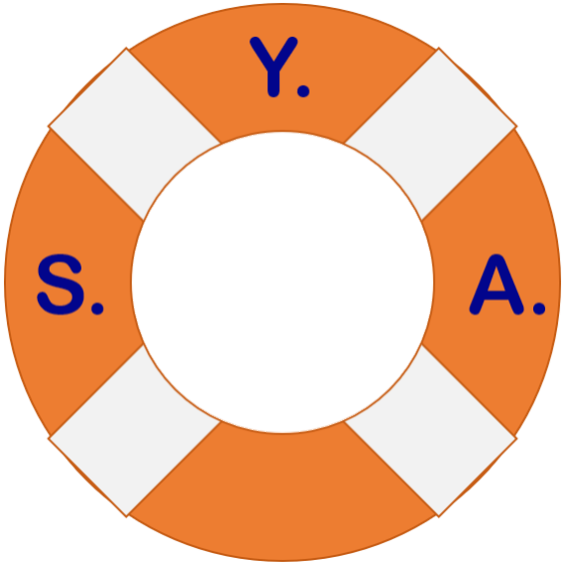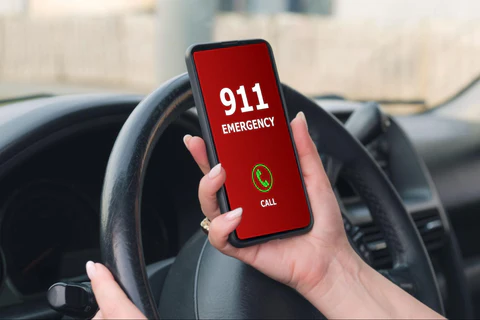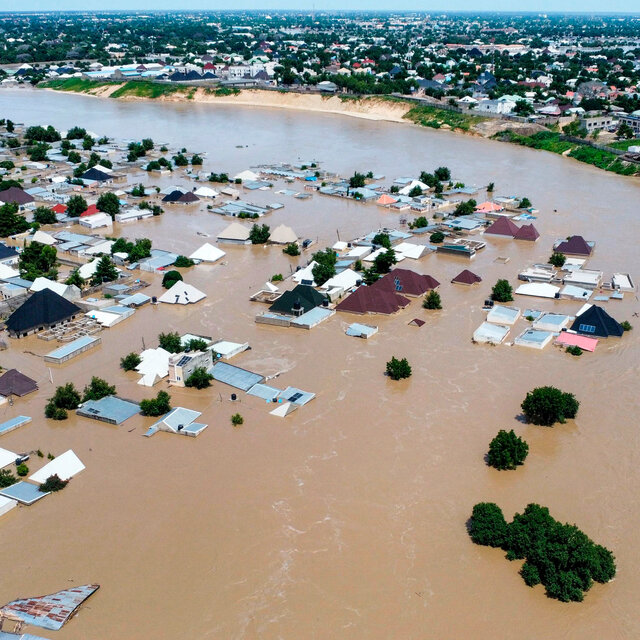You really need a rechargeable battery pack (or two) these days. Almost everything you use needs power of some sort or another. Whether hiking, camping, sitting at the airport or trying to get through a power outage or disaster, having the ability to power or recharge electrical devices is critical. From your cell phone, tablet or laptop to being able to watch the TV or keep the food in your refrigerator or chest freezer from spoiling you need backup power options.
Battery Sizes
There are multiple sizes of rechargeable battery packs available from small portable ones to large battery generators that can keep your house powered for an extended outage. Below is a (very) simple breakdown to give you an idea of the different sizes and what they can support.
| Small Up to 40,000mAh | Medium 240Wh-500Wh | Large 1000Wh-3000Wh | Whole House 7kW + |
| Phone Tablet Wireless ear buds | Laptop Internet Router LED Light CPAP Machine Small Fan | Refrigerator Chest Freezer LED TV Coffee Maker | Electric Stove Microwave Toaster Oven Heat or A/C unit |
| $50 or less | $200-$500 | $900-$3000 | Estimate will vary based on size of system |
Terms
The terminology used can be confusing as different sized devices use different measurements to indicate their power capabilities. Here are some of the more common terms you will see.
- mAh: A milliampere hour (mAh) is 1000th of an ampere hour ( Ah ). Usually on smaller battery packs.
- Ah: The Amp hour rating indicates how much amperage a battery can provide for one hour.
- Wh: A unit of energy equivalent to one watt (1 W) of power expended for one hour (1 h) of time. Usually on medium and large battery packs.
- W: Watt
- kW: A kilowatt is a measure of 1,000 watts of electrical power. Typically used for solar panels, wind turbines and extra-large/whole house batteries.
The whole house solutions are professionally installed systems like a Tesla Powerwall backup battery. These are expensive options for those that can afford them. For the purposes of this article I am only talking about portable options in the small-large categories.
My Setup
I have several batteries to ensure I can keep necessary devices charged or plugged in. The first battery banks I used to have were gum-pack sized batteries (1000mAh) that could recharge my cellphone in a pinch 1-3 times while travelling for business. They were small, lightweight and did the trick back in the day. Like any battery device their batteries lose capacity over time and these both gave up the ghost after 5-7 years of use.
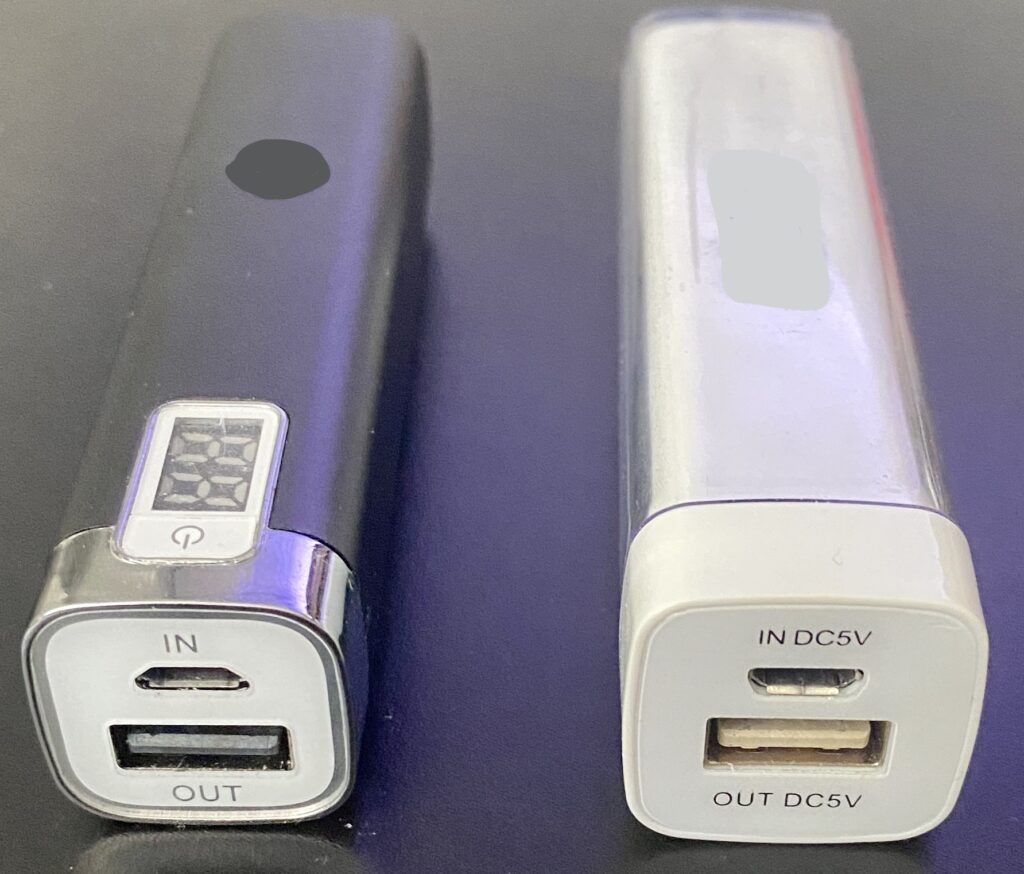
Small Devices
Now with my outdoor adventures and emergency preparedness equipment, I have many more devices that are rechargeable so I needed something that could support them. For my small portable rechargeable battery pack, I purchased a larger 26,800mAh waterproof charging brick. In addition to my phone, it can also charge other devices when I’m exploring outdoors.
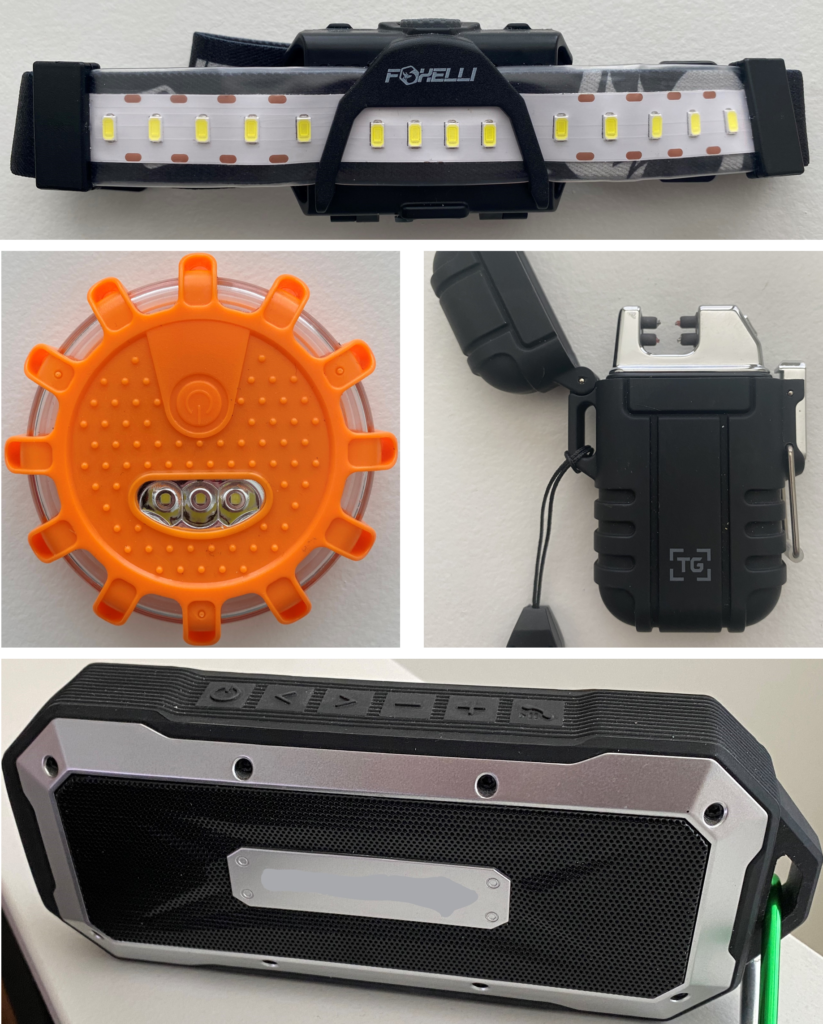
It has a Qi wireless charging pad for my phone, 2 USB A ports and one USB C port, allowing multiple devices to be charged simultaneously. The solar panel allows it to get small amount of charge while I’m on the go and it even has a flashlight. This is in my hiking/bug-out bag and always goes with me when exploring the outdoors. I easily can get through an entire weekend of phone charging with this and still have power to spare.

Medium & Large Devices
For my medium and large power needs, (including drive-in camping and extended road-trips) I settled on a Jackery brand package that was a limited time offer through Costco.
My package consists of one large rechargeable battery pack, one medium rechargeable battery pack and two solar panels:
- Jackery Explorer 880 (Large Battery)
- Allows me to plug in my refrigerator and chest freezer to keep them running during a power outage so my food doesn’t spoil.
- Jackery Explorer 290 (Medium Battery)
- Allows me to plug in my Internet router to keep Wifi and Internet connectivity.
- 2 – 100w Solar Saga portable solar panels
- Allows me to charge both batteries during the day so I continue to power devices overnight.
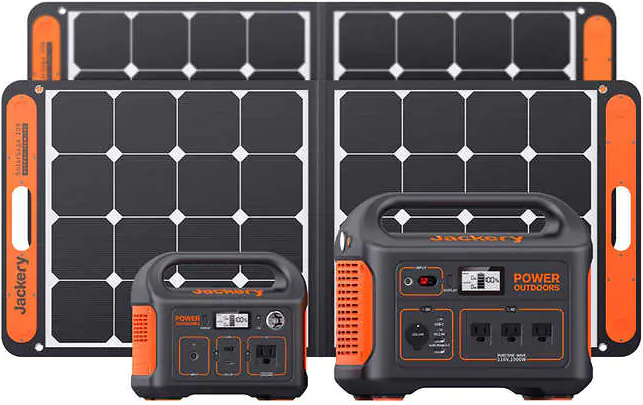
I’m working on a review of this solar generator package to let you know how it performs. I will be testing it at home in the spring and during the high heat of summer to see how it keeps my chest freezer and refrigerator running. I will also test it while camping. Keep an eye out for the article this summer.
Good for you, so why do I need them?
As I mentioned at the beginning, almost everything needs electricity these days. With the trend to move to an all-electric society to combat climate change finally taking off, the need for power is only increasing. Don’t be under any illusions this will happen quickly. This transition will take decades to complete. Because the vast majority of people ignored (and many still are in denial) the warnings about climate change the world is way behind being ready to supply the necessary power to meet existing needs let alone future ones.
Climate change is here now
During this transition, we have to acknowledge that climate change is here now. We are already living with extreme weather causing more frequent, severe disasters like drought, wildfires, hurricanes, tornadoes, flooding, and more. Power grids are struggling to stay up under the increasing demand for air conditioning during extreme heat events. In Feb 2021, the south and Texas in particular experienced the complete opposite, an extreme cold event that crushed their power grid for days causing enormous damage to homes and businesses from frozen pipes that burst.
During the hot summer months, some utility companies in western states are pre-emptively cutting power during high wind events to prevent their power lines from sparking fast moving wildfires. Wildfires that are exacerbated by the high temperatures and drought conditions. These climate change-fueled disasters are only going to increase the frequency and duration of power outages for years to come. You need solutions and you need to prepare now.
Portability = Flexibility
The portable system I have won’t run my whole house, nor did I buy it for that reason. The main reason I bought it was for power outages lasting more than 4 hours so that I could ensure the contents of my refrigerator and chest freezer don’t spoil. Having batteries that I can move around easily provides flexibility a gas generator can’t.
The portability and clean, quiet nature of a battery also gives me the ability to keep my Internet router powered to stay connected and provide wireless service at home during the outage.
If I go camping or on a road trip, I can take one or more with me ensuring I can power electrical devices wherever I’m at. I can even recharge my small battery pack from them as well.
Battery vs. Gas
Unlike a portable gas generator, batteries are clean, quiet and renewable. I can use them indoors, and the cooling fan is barely noticeable. There are no fumes. I just have to put the solar panels out during the day to recharge them.
Gas generators, on the other hand, have to be run outdoors to prevent carbon monoxide poisoning. They only last as long as your fuel supply does. A gas generator also advertises to the whole neighborhood you have power. If you were not popular before, you will be during a power outage which depending on the circumstances may not be a good thing.
By contrast, you can’t “hear” my solar panels from the next block over or even a few houses away while they recharge my battery station. The only way you will know I have power is if you can see my panels where I place them (or at night if you see a light on).
How do I know what to get?
First, make a list of what devices you would want to be able run or charge during an outage. You might be surprised how many things you come up with once you think about it. Once you have that list then you can determine the wattage you need to support those devices.
Keep in mind that anything with a heating element like a coffee pot, toaster oven, microwave or electric stove will require a large or whole house battery to be able to support the load (or a fuel dependent generator).
For small devices and appliances, a small or medium sized battery should do the trick. More than likely, you are going to need more than one battery. As you can see, I have all 3 sizes to accommodate different needs simultaneously.
Where can I find them?
For a small rechargeable battery pack, like my power brick, there are so many options to choose from on Amazon. You can also find these in just about any retailer these days. Prices range from $20-50 for most batteries.
For a medium or large rechargeable battery pack there are several American companies that are well established. Jackery (California) and Goal Zero (Utah) are two brands in this space, along with many others.
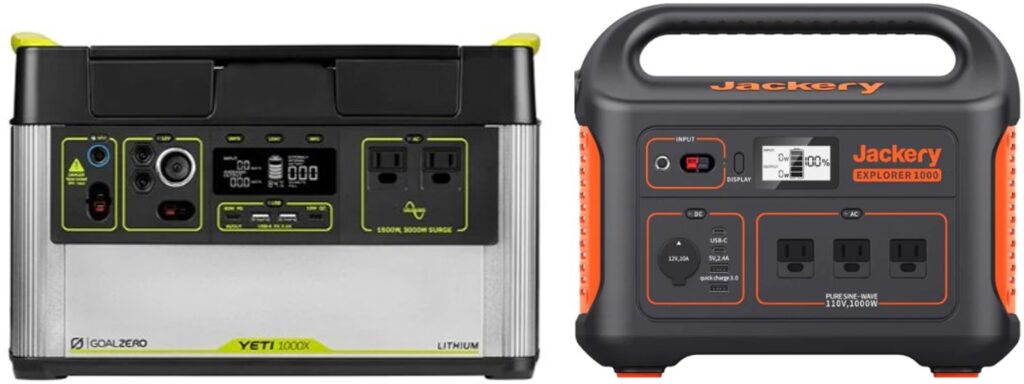
Their websites can tell you what stores you can find their products in, but generally speaking any outdoor equipment or home repair store should carry them.
IMPORTANT: Do your research before purchasing any product to make sure it will meet your needs.
Other Options
Other options you can consider is getting solar panels and/or a wind turbine paired with a whole-house battery pack installed to provide full time power options to offset your grid use. These can be expensive upfront with the savings realized over time.
Some communities are setup to let you ‘sell’ excess power your system generates back to the grid providing a (small) source of income from your investment. Instead of owning the power company $100 each month, maybe they are paying you $25-50 a month for your excess capacity. Check with your local officials to find out what is allowed in your community.
Bottom Line
I don’t know about you, but I have a chest freezer full of meat that I can’t afford to have spoil and have to throw out if there is an extended power outage. If you missed my article last month about Food Safety During a Power Outage, click the link to read it.
I also want to keep my Internet router powered and be able to turn on the tv or a light at night so I can stay informed of the latest developments.
And no, you can’t come over and charge your phone because it’s dead. Poor planning and preparation on your part does not constitute an emergency for me.
Don’t be a victim…be prepared.
Last Updated on August 16, 2022
